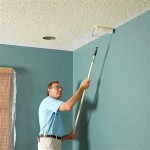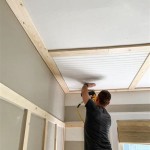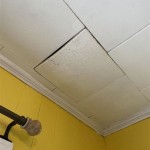Outdoor Ceiling Fans Without Lights: A Comprehensive Guide
Outdoor spaces have become extensions of the home, requiring the same attention to comfort and style as indoor living areas. One increasingly popular addition to patios, porches, and verandas is the outdoor ceiling fan. While many models incorporate lighting, a significant number of homeowners are specifically seeking outdoor ceiling fans without lights. This article provides a detailed exploration of the benefits, factors to consider, and key features of outdoor ceiling fans designed without integrated lighting.
Reasons to Choose an Outdoor Ceiling Fan Without a Light
The decision to forego an integrated light fixture in an outdoor ceiling fan is often driven by a variety of practical and aesthetic considerations. One primary reason is the existing lighting infrastructure. Many outdoor spaces already possess adequate illumination through wall-mounted lights, landscape lighting, or string lights. Adding a ceiling fan with another light fixture could result in excessive brightness and an undesirable lighting scheme. In these instances, a fan without a light offers a simpler, more streamlined appearance.
Another factor is control over the ambient lighting. Homeowners might prefer to use a particular type of lighting, such as solar-powered lanterns or colored string lights, to create a specific atmosphere. Integrating a ceiling fan with a built-in light would limit this customization. By choosing a fan without a light, the homeowner retains complete control over the lighting design and can create a truly personalized outdoor experience.
Furthermore, the absence of a light fixture can contribute to a cleaner, more minimalist aesthetic. Some prefer the simplicity of a fan without the added visual complexity of a light kit. This can be particularly appealing in modern or contemporary outdoor spaces where clean lines and uncluttered designs are prioritized.
Finally, cost can be a factor. Outdoor ceiling fans without lights are often less expensive than those with integrated lighting. For budget-conscious homeowners who are already satisfied with their outdoor lighting, a fan without a light represents a more economical option.
Key Considerations When Selecting an Outdoor Ceiling Fan
Choosing the right outdoor ceiling fan requires careful consideration of several factors, ensuring both functionality and longevity. The following elements are crucial for making an informed decision:
Location and Environment: The specific location of the fan significantly influences the type of fan required. Porches and covered patios offer more protection from the elements than open decks or pergolas. Fans intended for damp locations are suitable for covered areas, providing resistance to moisture and humidity. However, fans designed for wet locations are necessary for areas directly exposed to rain, snow, and direct sunlight. These fans feature sealed motors and weather-resistant blades that can withstand harsh environmental conditions. Checking the fan’s UL (Underwriters Laboratories) listing is essential to confirm its suitability for the intended location.
Fan Size and Blade Span: The size of the outdoor space dictates the appropriate fan size and blade span. A larger space requires a fan with a wider blade span to effectively circulate air. As a general guideline, for spaces up to 100 square feet, a fan with a 42-inch blade span is sufficient. For spaces between 100 and 300 square feet, a 52-inch fan is recommended. Larger spaces, exceeding 300 square feet, may require a 60-inch or larger fan, or potentially multiple fans.
Motor Type and Performance: The fan motor determines the fan's performance, energy efficiency, and lifespan. DC (Direct Current) motors are generally more energy-efficient and quieter than AC (Alternating Current) motors. They also often offer more speed settings and smoother operation. While DC motors tend to be more expensive upfront, their long-term energy savings can offset the initial cost. It is essential to check the fan's airflow rating, measured in Cubic Feet per Minute (CFM), to ensure adequate air circulation for the intended space. A higher CFM rating indicates a more powerful airflow.
Blade Material and Construction: Outdoor ceiling fans are typically constructed with blades made from materials designed to withstand the elements. Common materials include ABS plastic, acrylic, and specially treated wood. ABS plastic blades are durable, lightweight, and resistant to warping and cracking. Acrylic blades offer similar benefits and can be manufactured in various colors and finishes. Wood blades designed for outdoor use are treated with weather-resistant coatings to protect them from moisture and UV damage. The blade pitch, or the angle of the blades, also affects airflow. A steeper blade pitch typically results in greater air movement.
Control Options: Outdoor ceiling fans offer various control options, including pull chains, wall controls, and remote controls. Pull chains are the simplest and most affordable option, while wall controls provide a more convenient and permanent installation. Remote controls offer the greatest flexibility, allowing users to adjust the fan speed and direction from anywhere within range. Some advanced models even offer smart home integration, enabling control via smartphone apps or voice commands.
Style and Aesthetics: While functionality is paramount, the fan's style and aesthetics should complement the overall design of the outdoor space. Outdoor ceiling fans without lights are available in a wide range of styles, from traditional to contemporary. Consider the existing furniture, architectural details, and color scheme of the outdoor area when selecting a fan to ensure a cohesive and visually appealing design.
Features to Look for in High-Quality Outdoor Ceiling Fans
Beyond the basic considerations of size, location, and motor type, several features distinguish high-quality outdoor ceiling fans. These features contribute to enhanced performance, durability, and user experience:
Weather-Resistant Housing: The fan housing should be constructed from materials that can withstand prolonged exposure to the elements. Look for housings made from corrosion-resistant metals, such as stainless steel or aluminum, with durable powder-coated finishes. The housing should also be designed to prevent water from entering the motor and other internal components.
Sealed Motor and Electronics: A sealed motor is essential for preventing moisture and dust from damaging the fan's internal components. High-quality outdoor ceiling fans feature sealed motors and electronics that are specifically designed to withstand damp or wet conditions. This ensures reliable performance and extends the fan's lifespan.
Rust-Proof Hardware: All hardware, including screws, bolts, and mounting brackets, should be made from rust-proof materials, such as stainless steel. This prevents corrosion and ensures the fan remains securely mounted over time. Check for hardware that is specifically designed for outdoor use and is resistant to salt spray and other corrosive elements.
Reversible Motor: A reversible motor allows the fan to be used in both summer and winter. In the summer, the fan should rotate counterclockwise to create a cooling breeze. In the winter, the fan should rotate clockwise at a low speed to circulate warm air that has risen to the ceiling. This can help reduce heating costs and improve overall comfort.
Multiple Speed Settings: Multiple speed settings provide greater control over the fan's airflow. This allows users to adjust the fan speed to suit their individual preferences and the current weather conditions. Look for fans with at least three speed settings, and ideally more, to provide a wider range of options.
Energy Efficiency Certifications: Look for fans that are certified by energy efficiency organizations, such as ENERGY STAR. ENERGY STAR-certified fans meet strict energy efficiency guidelines and can help reduce energy consumption and lower utility bills. These certifications provide assurance that the fan is operating efficiently and minimizing environmental impact.
Warranty: A comprehensive warranty provides peace of mind and protects against potential defects or malfunctions. Look for fans with a warranty that covers both the motor and other components. A longer warranty period typically indicates a higher-quality product.
By considering these features, homeowners can select an outdoor ceiling fan that not only provides effective air circulation but also offers long-lasting durability and reliable performance in the challenging outdoor environment. Ultimately, the choice of an outdoor ceiling fan without a light offers a customizable solution for enhancing outdoor comfort and aesthetics while retaining control over the overall lighting design.

Outdoor Ceiling Fans Without Lights

Outdoor Ceiling Fans Without Lights

Outdoor Ceiling Fans Without Lights Are Damp Wet Rated For Indoor Areas Delmarfans Com

Hunter Kennicott 44 In Indoor Outdoor Premier Broe Ceiling Fan With Wall Control 51114 The Home

Cyclone 60 Inch Outdoor Fan In White By Visual Comfort Co Collection At Destination Lighting Ceiling Fans Without Lights

Outdoor Ceiling Fans Without Lights

Ceiling Fans Without Lighting With No Light Kits For Your Home Delmarfans Com

Tfvv 72 Inch Ceiling Fan Without Lights 3 Wood Blades Fans With Remote Control No Light Dc Motor Large Outdoor For Patios Waterproof Porch And Gazebo Deep Walnut Yahoo Shopping

Ceiling Fans Without Lights Hunter Fan

Ceiling Fans Without Lights Hunter Fan








